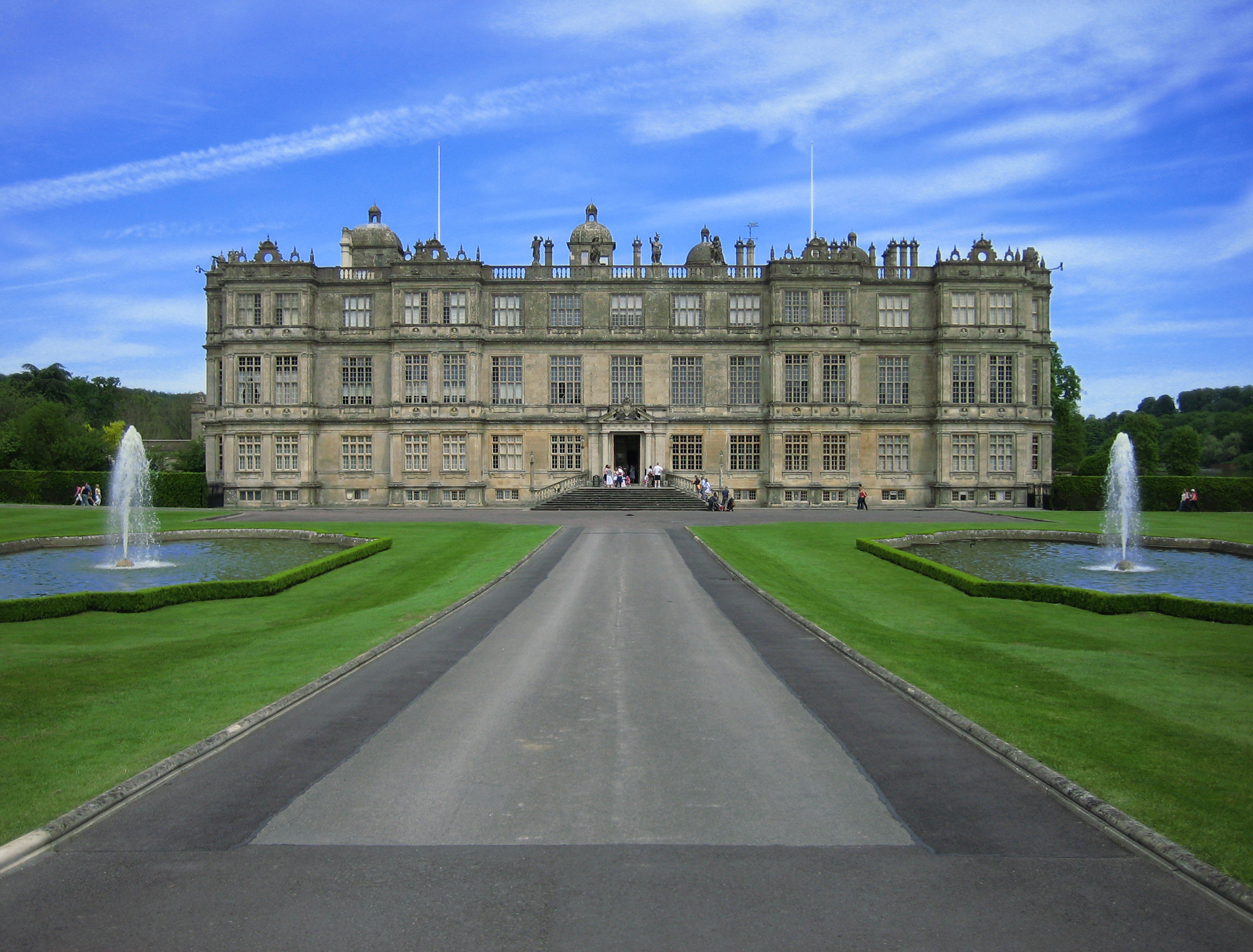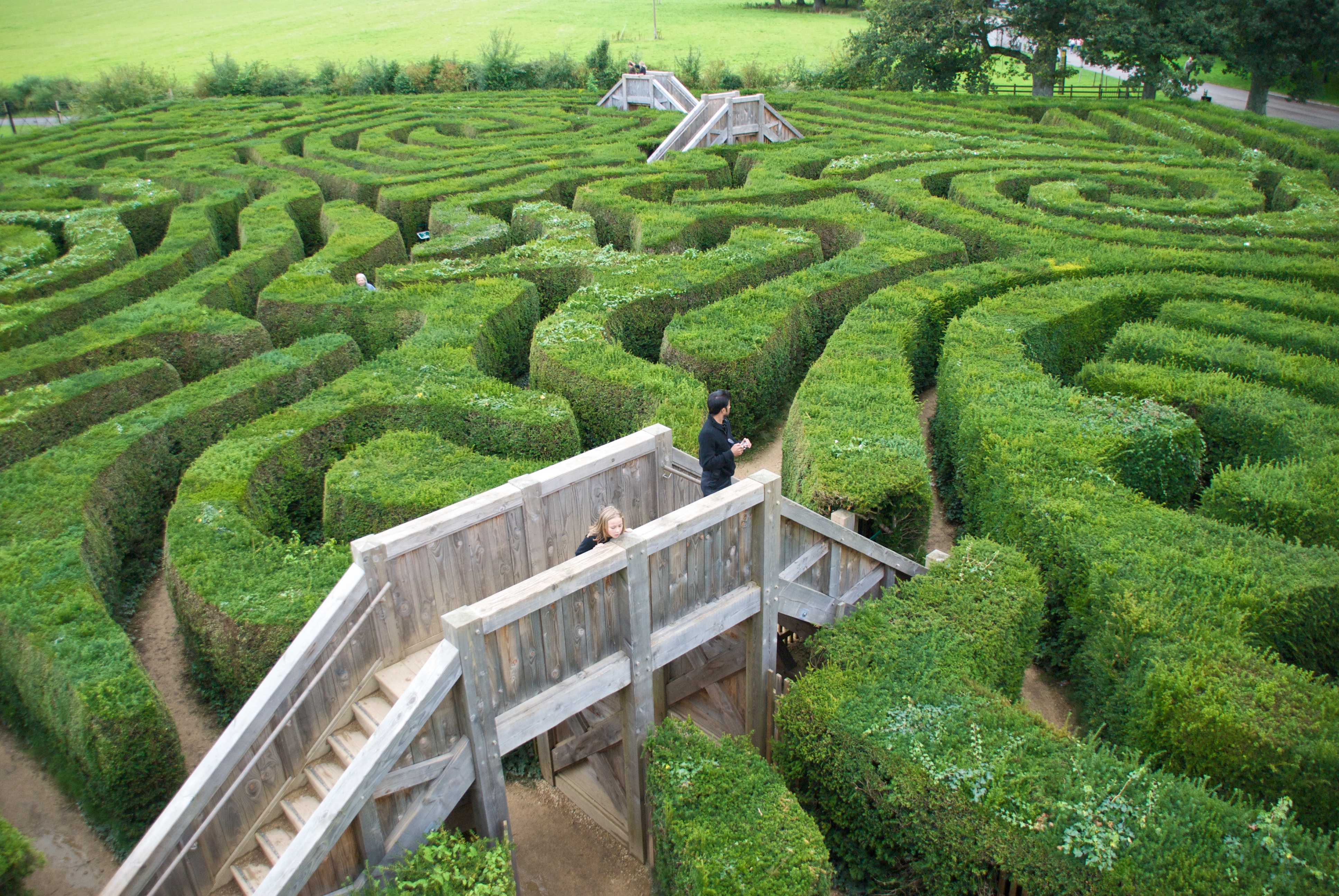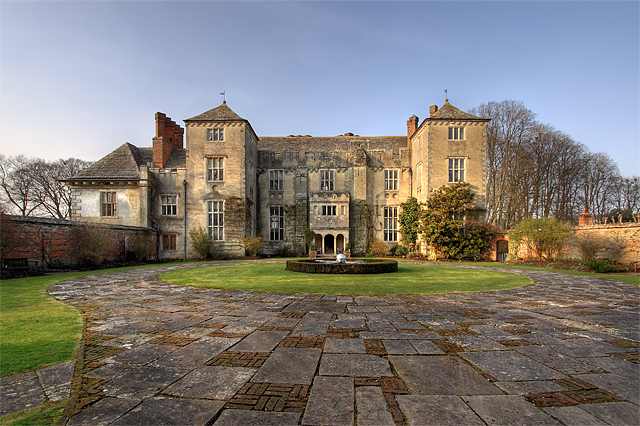|
John Of Padua
John of Padua (recorded active between 1543 and 1557) was an elusive figure of the English Renaissance who was employed at the courts of Henry VIII and his successor, Edward VI, during a period in which numerous foreign architects and artisans arrived in England, bringing with them the new concepts and evolutions of the Italian Renaissance as it spread across Europe. He disappears from the records after 1557.Summerson 1963:6. John of Padua, John Thorpe and Robert Smythson were near contemporaries all working in the currently evolving English Renaissance style in an age of often poor record keeping. As a result, their works have become blurred and there is debate over whose hand was responsible for which building, and John of Padua has become a mysterious and enigmatic figure in English architectural history. Sir John Summerson warned of this phenomenon, however, that "when it comes to the test of building accounts we find that very little indeed can be ascribed to foreign hands. ... [...More Info...] [...Related Items...] OR: [Wikipedia] [Google] [Baidu] |
Longleat House
Longleat is a stately home about west of Warminster in Wiltshire, England. A leading and early example of the Elizabethan prodigy house, it is a Grade I listed building and the seat of the Marquesses of Bath. Longleat is set in of parkland landscaped by Capability Brown, along with of let farmland and of woodland, which includes a Center Parcs holiday village. It was the first stately home to open to the public, and the Longleat estate has the first safari park outside Africa and other attractions including a hedge maze. The house was built by Sir John Thynne and designed mainly by Robert Smythson, after Longleat Priory was destroyed by fire in 1567. It took 12 years to complete and is widely regarded as one of the finest examples of Elizabethan architecture in Britain. It continues to be the seat of the Thynn family, who have held the title of Marquess of Bath since 1789; the eighth and present Marquess is Ceawlin Thynn. History Longleat was previously an Au ... [...More Info...] [...Related Items...] OR: [Wikipedia] [Google] [Baidu] |
Charlecote House
Charlecote Park () is a grand 16th-century country house, surrounded by its own deer park, on the banks of the River Avon in Charlecote near Wellesbourne, about east of Stratford-upon-Avon and south of Warwick in Warwickshire, England. It has been administered by the National Trust since 1946. It is a Grade I listed building and is open to the public. The park and gardens are listed Grade II* in Historic England's Register of Parks and Gardens. History The Lucy family owned the land from 1247. Charlecote Park was originally built in 1558 by Sir Thomas Lucy, and Queen Elizabeth I stayed in the room that is now the drawing room. Although the general outline of the original Elizabethan house remains, the present house is of mostly Victorian construction. Successive generations of the Lucy family modified Charlecote Park over the centuries until George Hammond Lucy ( High Sheriff of Warwickshire in 1831) inherited the house in 1823 and set about recreating the house in its ori ... [...More Info...] [...Related Items...] OR: [Wikipedia] [Google] [Baidu] |
Hans Holbein The Younger
Hans Holbein the Younger ( , ; ; – between 7 October and 29 November 1543) was a German-Swiss painter and printmaker who worked in a Northern Renaissance style, and is considered one of the greatest portraitists of the 16th century. He also produced religious art, satire, and Reformation propaganda, and he made a significant contribution to the history of book design. He is called "the Younger" to distinguish him from his father Hans Holbein the Elder, an accomplished painter of the International Gothic, Late Gothic school. Holbein was born in Augsburg but worked mainly in Basel as a young artist. At first, he painted murals and religious works, and designed stained glass windows and illustrations for books from the printer Johann Froben. He also painted an occasional portrait, making his international mark with portraits of humanist Desiderius Erasmus of Rotterdam. When the Reformation reached Basel, Holbein worked for reformist clients while continuing to serve traditi ... [...More Info...] [...Related Items...] OR: [Wikipedia] [Google] [Baidu] |
Benjamin Disraeli
Benjamin Disraeli, 1st Earl of Beaconsfield (21 December 1804 – 19 April 1881) was a British statesman, Conservative Party (UK), Conservative politician and writer who twice served as Prime Minister of the United Kingdom. He played a central role in the creation of the History of the Conservative Party (UK), modern Conservative Party, defining its policies and its broad outreach. Disraeli is remembered for his influential voice in world affairs, his political battles with the Liberal Party (UK), Liberal Party leader William Ewart Gladstone, and his one-nation conservatism or "Tory democracy". He made the Conservatives the party most identified with the British Empire and military action to expand it, both of which were popular among British voters. He is the only British prime minister to have been British Jews, born Jewish. Disraeli was born in Bloomsbury, at that time a part of Middlesex. His father left Judaism after a dispute at his synagogue; Benjamin became an An ... [...More Info...] [...Related Items...] OR: [Wikipedia] [Google] [Baidu] |
Vivian Grey
''Vivian Grey'' is Benjamin Disraeli's first novel, published by Henry Colburn in 1826. Originally published anonymously, ostensibly by a so-called "man of fashion", part 1 caused a considerable sensation in London society. Contemporary reviewers, suspicious of the numerous solecisms contained within the text, eventually identified the young Disraeli (who did ''not'' move in high society) as the author. Disraeli continued the tale in a second volume, also of 1826, and three subsequent volumes in 1827. The form in which ''Vivian Grey'' is published now is the revised 1853 edition, which was severely expurgated and, according to critic Wendy Burton, lost much of the charm and freshness of the 1826 edition. The book is a frequent touchstone for discussions of Disraeli's political and literary career. Synopsis ''Vivian Grey'' follows its eponymous hero from childhood through his attempt to succeed in the world of politics. The various systems of education through which Vivian Grey p ... [...More Info...] [...Related Items...] OR: [Wikipedia] [Google] [Baidu] |
John Caius
John Caius (born John Kays ; 6 October 1510 – 29 July 1573), also known as Johannes Caius and Ioannes Caius, was an English physician, and second founder of Gonville and Caius College, Cambridge. Scholar and physician to Edward VI and Mary I of England. Biography Early years Caius was born in Norwich and was educated at Norwich School. In 1529, he was admitted as a student at Gonville Hall, Cambridge, founded by Edmund Gonville in 1348, where he seems to have mainly studied divinity (academic discipline), divinity. After graduating in 1533, he visited Italy, where he studied under Johannes Baptista Montanus, Montanus and Vesalius at Padua. In 1541 he took his degree as a physician at the University of Padua. In 1543 he visited several parts of Italy, Germany and France and then returned to England. Upon his return from Italy he Latinised his surname which was somewhat fashionable at the time. Career Caius was a physician in London in 1547, and was admitted as a fellow of ... [...More Info...] [...Related Items...] OR: [Wikipedia] [Google] [Baidu] |
Caius College, Cambridge
Gonville and Caius College, commonly known as Caius ( ), is a constituent college of the University of Cambridge in Cambridge, England. Founded in 1348 by Edmund Gonville, it is the fourth-oldest of the University of Cambridge's 31 colleges and one of the wealthiest. In 1557, it was refounded by John Caius, an alumnus and English physician. The college has been attended by many students who have gone on to significant accomplishment, including fifteen Nobel Prize winners, the second-largest number of any Oxbridge college. Several streets in the city, including Harvey Road, Glisson Road, and Gresham Road, are named after Gonville and Caius alumni. The college and its masters have been influential in the development of the university, including in the founding of other colleges, including Trinity Hall and Darwin College and providing land on Sidgwick Site on which the Faculty of Law was built. History The college was founded in 1348 as Gonville Hall by Edmund Gonville ... [...More Info...] [...Related Items...] OR: [Wikipedia] [Google] [Baidu] |
Dunster Castle
Dunster Castle is a former motte and bailey castle, now a English country house, country house, in the village of Dunster, Somerset, England. The castle lies on the top of a steep hill called the Tor, and has been fortified since the late Anglo-Saxon period. After the Norman Conquest of England in the 11th century, William de Mohun constructed a timber castle on the site as part of the pacification of Somerset. A stone shell keep was built on the motte by the start of the 12th century, and the castle survived a siege during the early years of the Anarchy. At the end of the 14th century the de Mohuns sold the castle to the Earl of Carhampton, Luttrell family, who continued to occupy the property until the late 20th century. The castle was expanded several times by the Luttrell family during the 17th and 18th centuries; they built a large manor house within the Lower Ward of the castle in 1617, and this was extensively modernised, first during the 1680s and then during the 1760s. ... [...More Info...] [...Related Items...] OR: [Wikipedia] [Google] [Baidu] |
Wadham College
Wadham College ( ) is a constituent college of the University of Oxford in the United Kingdom. It is located in the centre of Oxford, at the intersection of Broad Street and Parks Road. Wadham College was founded in 1610 by Dorothy Wadham, according to the will of her late husband Nicholas Wadham, a member of an ancient Devon and Somerset family. The central buildings, a notable example of Jacobean architecture, were designed by the architect William Arnold and erected between 1610 and 1613. They include a large and ornate Hall. Adjacent to the central buildings are the Wadham Gardens. Wadham is one of the largest colleges of the University of Oxford, with about 480 undergraduates and 240 graduate students. The college publishes an annual magazine for alumni, the ''Wadham College Gazette''. As of 2022, it had an estimated financial endowment of £113 million, and in the 2021–2022 academic year ranked seventh in the Norrington Table, a measure which ranks Oxford coll ... [...More Info...] [...Related Items...] OR: [Wikipedia] [Google] [Baidu] |
Cranborne Manor
Cranborne Manor is a Grade I listed country house in Cranborne, Dorset, in southern England. The manor dates back to around 1207/8, and was originally a hunting lodge. It was re-modelled for The 1st Earl of Salisbury in the early 17th century. The main seat of the earls and marquesses of Salisbury is Hatfield House in Hertfordshire, and Cranborne Manor is often the home of the heir to the title, who uses the courtesy title Viscount Cranborne. The house The house is a Grade I listed building, being "extremely important both as a rare survival of early C13 domestic architecture and as a fine early C17 country house" remodelled, after 1608, by William Arnold who also worked on Dunster Castle in this period and built Montacute House and Wadham College, Oxford. The original Manor house was actually built for King John in the 12th century and was used as a royal hunting lodge. It is constructed of ashlar, rubble and flint with ashlar dressings. The roofs are tiled and slated, ... [...More Info...] [...Related Items...] OR: [Wikipedia] [Google] [Baidu] |
William Arnold (architect)
William Arnold (fl. 1595–1637) was an important master mason in Somerset, England. As a stonemason and architect, William Arnold was head of a migrating band of professional Somerset stonemasons who worked on many houses. Arnold was known to have been living in Charlton Musgrove near Wincanton in 1595 where he was church warden. His first known commission was for the design of Montacute House in c1598. This is one of the finest Elizabethan mansions in the country and was designed for Sir Edward Phelips. Other works include the remodelling of a hunting lodge at Cranborne to form a manor house for Robert Cecil, 1st Earl of Salisbury in 1607–1610. He was then commissioned in 1610–1613 by Dorothy Wadham, a Somerset resident, to design and oversee the building of Wadham College, Oxford. Wadham College is widely regarded as the last major public building in the UK to have been built according to the mediaeval principles of a supervising master mason. His last known work was ... [...More Info...] [...Related Items...] OR: [Wikipedia] [Google] [Baidu] |
Montacute House
Montacute House is a late Elizabethan era, Elizabethan mansion in Montacute, South Somerset, England. An example of English architecture created during a period that was moving from the medieval Gothic architecture, Gothic to the more Classical architecture, classically-inspired Renaissance architecture, Renaissance style, Montacute is one of the few prodigy houses to have survived almost unchanged from the Elizabethan era. The house has been designated as a Grade I listed building, and its gardens are also listed at the highest grade on the Register of Historic Parks and Gardens of Special Historic Interest in England. Designed by an unknown architect, possibly the mason William Arnold (architect), William Arnold, the three-storey mansion, constructed of the local Ham Hill, Somerset, Ham Hill stone, was built in about 1598 for Sir Edward Phelips (speaker), Edward Phelips, a lawyer and politician who was Speaker of the House of Commons (United Kingdom), Speaker of the House of ... [...More Info...] [...Related Items...] OR: [Wikipedia] [Google] [Baidu] |









